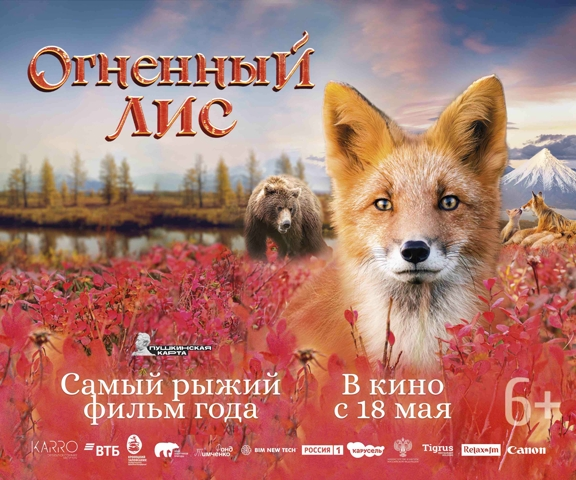
Starting May 18, Russian cinemas will begin showing a documentary film shot entirely in the wild - on the territory of the Kronotsky Nature Reserve. The plot of the film is not fiction - it reflects the real story of a family of foxes in natural conditions and the flow of life situations that happened to them. This flow of situations is unique in the life of each animal and forms the system of its reactions to the outside world in a unique way. The film itself was conceived back in 2014, at that time Anna Yachmennikova, an employee of the Institute of Economics and Ecology of the Russian Academy of Sciences, was working on the territory of the Kronotsky Nature Reserve.
Anna studied the patterns in behavior formation of fox cubs in natural conditions. This work was a logical continuation of her dissertation work on the study of behavior formation in wolf cubs. The Kronotsky Nature Reserve managed to preserve the conditions of their natural life for animals without a trace of many years of human influence. And the opportunity to observe how animals develop in nature with all the nuances of their intraspecific relationships and the influence of the experience of interspecific interactions is a rare chance. Some of the results of this work were published in scientific articles: Formation of behavior of fox cubs (Vulpes vulpes) in the wild: development of interactions with crows (Corvus corone) and bears (Ursus arctos)), Hidden patterns in the play behavior of fox cubs (Vulpes vulpes) in the wild : differences in the structure of the game in ontogenesis. However, most of the materials are still awaiting publication.
Following in the footsteps of Anna’s work and with the help of the understanding of foxes that she developed over 5 years in the Reserve, a film crew of only two people - Dmitry and Anna Shpilenok - was able to very accurately document the life of wild foxes of Kamchatka and observe the same family continuously for 3 years, which in itself is not easy. This film, in a way, also became an independent research work: very complex, both in terms of expedition and in terms of organizing filming and working with wild animals in natural conditions, which cannot be asked to turn around at the most favorable angle in front of the camera. Filming of the highest quality very subtly conveys all the unique beauty of the nature of Kamchatka, the features of facial expressions and the gracefulness of fox movements. Anna Yachmennikova became a scientific consultant for the film, thanks to this the film will turn out to be biologically literate and therefore conveys to a person far from events in nature its harmony and reflects the completeness of the interconnections of all living things - through the image of a fox. Anna herself admits that these red animals taught her a lot. A colorful popular science book was also released for the film - an educational guide about foxes, specially prepared and anticipating the flow of interest in the fox and its biology that will arise after the film.
Related materials:
AiF Kamchatka: "A film will be made in Kamchatka about the adventures and family life of foxes"
Russian Geographical Society: "Social behavior of foxes"
Elements: "Lecture by Anna Yachmennikova "Foxes - resourceful inhabitants of open spaces"
Kamchatinfo: “Biologists in Kamchatka are studying the specifics of family relationships of Kronotsky foxes”
AiF Kamchatka: “The main characters of the film “Kamchatka. A Tale of Foxes” do not aspire for stardom”
News from Petropavlovsk-Kamchatsky - Bezformata: “Exemplary foxes live in the Kronotsky Nature Reserve in Kamchatka”
News agency "Kam 24": "Residents of Kamchatka will be told about the life of the foxes Egor and Anfisa"
NEWs: "The biologist told how to behave when meeting a fox in the city"
Basegi Nature Reserve: "A very caring father fox"
Kamchatinfo: “A very caring father fox was discovered in the Kronotsky Nature Reserve in Kamchatka”
